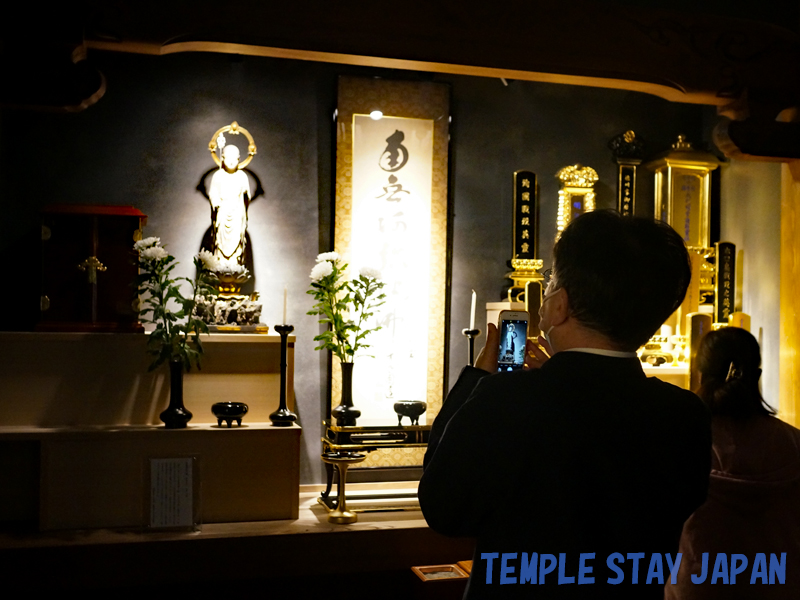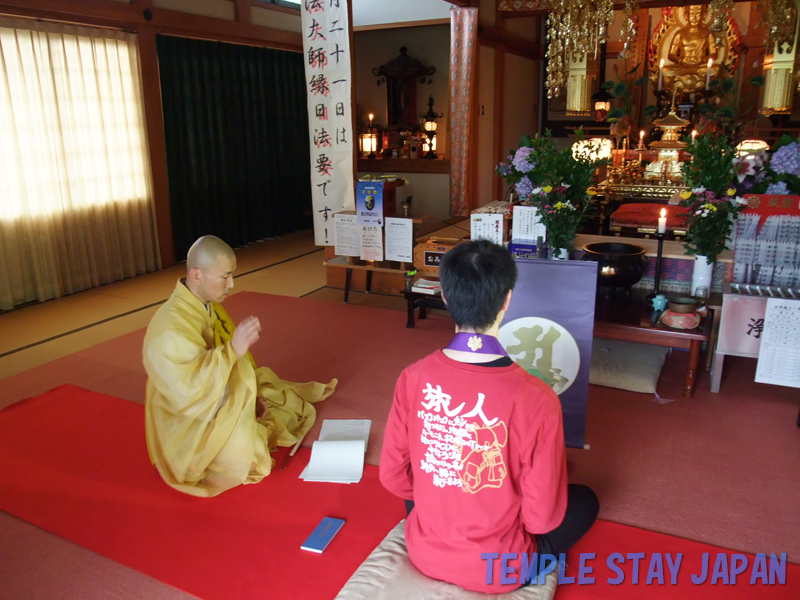stay– category –
-

Horinji temple stay (Gunma)
Horinji Temple is an Obaku sect temple founded in 1306. Accommodation is limited to one group per day. We experienced zazen, copying sutras, and morning service. At night, the main gate, main hall, and belfry were lit up. We had a barbecue for dinner. The monk is very kind. -

Konkoin temple stay (Kyoto)
Konkoin is a sub-temple located within the grounds of Konkai-Komyoji Temple, the head temple of the Jodo sect. The shukubo is limited to one group per day. We participated in making prayer beads bracelets. The next morning, morning services were held in the main hall from 7:30. -

Chisyakuin-Kaikan temple stay (Kyoto)
Chisyaku-in is the head mountain of the Chisan school of the Shingon sect. Morning service, about 50 to as many as 150 priests chanted the sutra loudly to the sound of Kei (a board like a percussion instrument), which produces a very refreshing atmosphere. -

Nisonin temple stay (Yamaguchi)
Nisonin Temple, located on the western edge of Honshu (the main island of Japan) , is a temple with 1,200 years of history. I had a meditation session in the main hall. Dinner is buddhist vegetarian cuisine made with local ingredients. After the meal, we had time to chat with the head priest over some drinks. -

Ekoin temple stay (Wakayama)
The Shojin cuisine served in the room was really delicious. Compared with the shukubo that I stayed at on the previous day, this place was larger in scale. In terms of accommodation facilities, it was more sophisticated. Only people who wished to participated in the morning service at the main hall from 6:30. -

Takayama-Zenkoji temple stay (Gifu)
Takayama Zenkoji Temple is a shukubo that was converted from a residence connected to the main hall. If you wish, you can experience copying sutras and meditation. There is morning worship and training that involves feeling your way through pitch-black underground corridors. -

Ichibatasan-Cottage temple stay (Shimane)
Ichibata-Yakushi is the head temple of the Ichibata-Yakushi sect and has long been said to have the power to cure eye diseases. There were two cottages in the grounds of Ichibata-Yakushi. Services were held in the main hall at 4:30 in the evening and 7:30 in the morning. I also participated in Zen meditation. -

Jokyoji temple stay (Kyoto)
Jokyoji Temple was built around 1171. It is located in downtown Kyoto. Modern accommodation facilities have been built in connection with the main hall. The next morning, I attended service. The attendees offered incense one by one. After the service, we also viewed the temple treasures in the main hall. -

Ryokoji temple stay (Kumamoto)
Ryokoji Temple was founded in 1653 and moved to its current location in 1666. Shukubo is limited to one group per day. When I stayed there, I had vegan food for dinner. In the evening, a service was held in front of the Buddhist altar in the large hall. Cats ran around, making it a very lively experience. -

ShimizuDaishiji temple stay (Shimane)
ShimizuDaishiji Temple was founded in 812 by Kobo Daishi.I experienced Ajikan meditation in the main hall. I continued breathing for a while, calming my mind. Because it was a temple in the mountains, the sounds of the wind and the croaking of frogs echoed softly, and I felt my mind become clearer in a quiet, still way.










